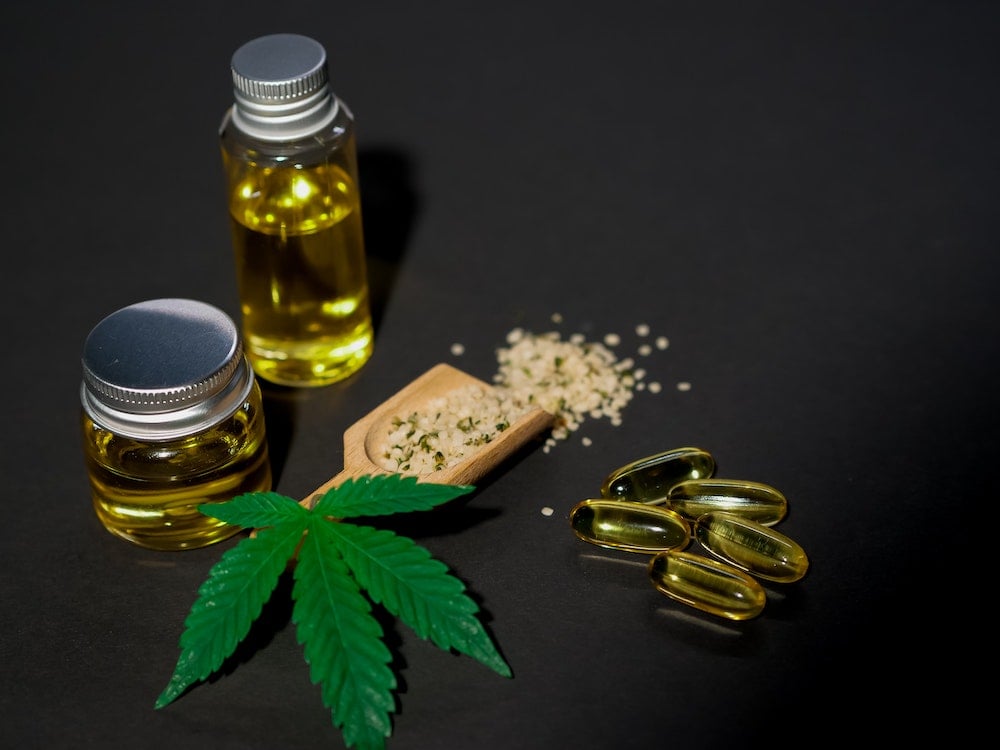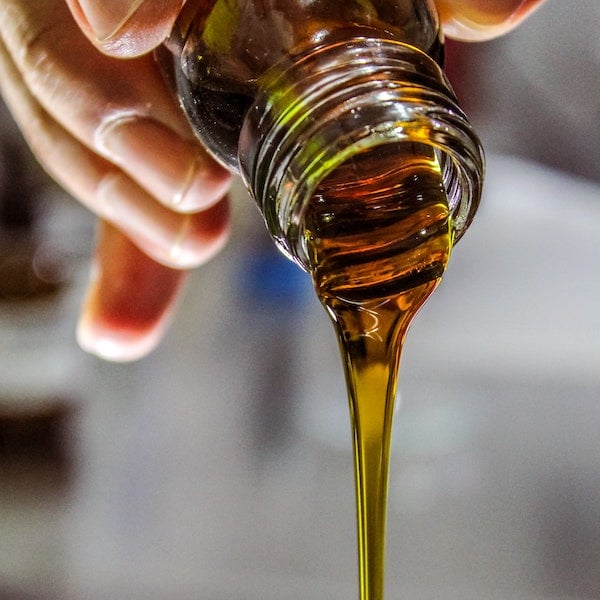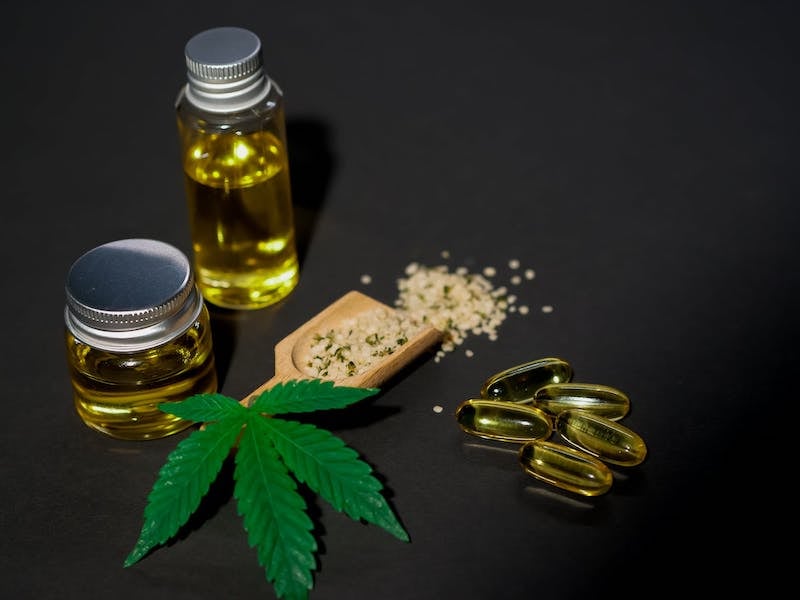
Cannaoil Secrets & How to Make Homemade Cannabis Oil
Cannaoil, a.k.a. cannabis-infused oil, is more than just the secret ingredient of magic brownies. It offers diverse ways to dose medical or recreational cannabis by simply incorporating it into your cooking. You can use cannabis oil to make sweet or savory edibles; with cannabis coconut oil, you can even improve your coffee or use it on sore muscles.
Cannabis consumption is on the rise, so whether you are completely new to it, looking for a healthy alternative to smoking, or just want to try your hand at being a canna chef, cannaoil just might be the next must-have addition to your pantry.
Cannaoil allows you to incorporate THC, CBD, and other beneficial cannabinoids into meals while offering you a longer high and access to more cannabinoids. Some versions can even be used as massage oil, hair masks, or beauty products. The best part is it’s easy enough to make yourself.
Making your own cannaoil offers a more holistic experience. You have total control over the ingredients, dosage, and production process and can get a closer connection to your cannabis. If you want to make it vegan, gluten-free, and artisanal, you can.
It is also a great opportunity to conserve. You can use vaporized cannabis flower, trim, or shake to make cannaoil ensuring you can harvest valuable cannabinoids rather than tossing them in the trash.
What Is Cannabis Oil?
Cannaoil is oil that’s been infused with cannabinoids like THC and CBD. It’s made by infusing the oil of your choice with decarboxylated cannabis. Unfortunately, popular cannabinoids like THC and CBD do not exist naturally in cannabis.
These high-demand compounds exist as acids like THC-A, which must be converted by heat into a form your body can use. Without decarbing weed, you will not feel the high of THC or get the medicinal properties of CBD, CBN, and other cannabinoids.
Decarbing is a required part of making a THC-infused oil. However, some cannabutter and edible recipes can allow you to skip decarbing depending on how long you’ll be baking your final product.
THC and other cannabinoids are fat soluble, which makes cannaoil or cannabutter the core ingredient of any edible. So whether you’re making a medicated version of candies, cakes, chimichurri, or even calamari, cannabinoids require fat to bond to.
Why Do Cannabinoids Need Fats?
Cannabinoids like THC and CBD are fat soluble, which means they attach to fatty acids. Water soluble compounds dissolve in water which is why you can enjoy an Emergen-C and get a major dose of Vitamin-C. The vitamin C, now in the water, gets absorbed by your body and taken where it needs to go.
Similarly, fat acts as the delivery system for THC, CBD, and other cannabinoids. Being fat-soluble means that they need fats to become available to the body. Many cannabis edibles consist of high-fat products like candies, chocolates, and brownies because they help THC travel through your body better.
Scientific studies have shown that when they are attached to fats like whole milk, butter, and oil, more cannabinoids become more available to your body. This is why you can sometimes get more “high” after eating fatty snacks when you get the munchies.
Your body will process various cannabinoids throughout the digestive process. This can be in your mouth, stomach, and intestines. For example, your body converts THC into 11-hydroxy-THC in the liver. This is a compound that only exists after the human body metabolizes the THC in cannabis.
It is why the “high” of edibles can vary from smoking. It’s a different form of THC, a blend of cannabinoids and terpenes, not to mention there are so many more ways for your body to absorb different compounds than from inhalation.
With edibles, your body accesses these compounds throughout the digestion process. Cannabinoid-bonded fats provide the perfect delivery system for your body to absorb them even late in the digestion process. One major point of entry is intestinal lymphatic transport.
Fats can be absorbed in the intestines and travel around the body through lymph, the other fluid in your blood. This is one more way it can engage with your endocannabinoid system.
These multiple points of entry are why the “high” of edibles, in addition to being different, can often delay at first and slowly escalate over time. This cascading effect is different cannabinoids interacting with your body.
With smoking, you get quick access to cannabinoids through inhalation. Your body metabolizes them, and the high goes away. With edibles, different cannabinoids can enter different parts of your body and hit your bloodstream at different times, which is why highs can sometimes last as long as 24 to 48 hours.

Photo by Fulvio Ciccolo on Unsplash
What Oil Should I Use For Cannaoil?
Honestly, you can use any oil you want to make cannaoil, but some will work better than others, depending on what you’re going for. It’s ideal to use natural oils rather than artificial fats like margarine, shortening, or highly refined and processed oils like corn, soybean, safflower, and sunflower oils.
You can use any of the following oils to make cannaoil:
- Avocado
- Canola
- Coconut
- MCT
- Olive
- Peanut
- Sesame
When choosing an oil for cannaoil, your choice will vary on certain key factors like flavor, versatility, and bioavailability. So first, ask yourself what you will use it for, what you plan to make with it, and how high you want to get.
- For example, canola oil can offer a more neutral flavor but might not absorb as many cannabinoids as oil with more saturated fat like olive and coconut oil.
- Sesame and peanut oil might offer a stronger flavor that can counteract any “weed” flavor or potential aftertaste but might make them harder to use for recipes like baked goods or sweet treats.
- Coconut oil is very popular as it has more saturated fat, is vegan, has a great shelf life, and can be used on the skin for massages, hair, and beauty treatments. It can even be used as a lubricant.
- Medium-chain triglyceride oil (MCT oil), also made from coconuts, is popular with bio-hackers for health benefits like boosting energy, weight loss, and battling ailments like Alzheimer’s. In addition, this can boost the medicinal properties of your cannabis.
Given its chemical breakdown, MCT, when bonded with cannabinoids, can allow them to hit the bloodstream more quickly. As a result, this oil can absorb more cannabinoids with a 91% infusion rate. The drawbacks are some people can have stomach trouble when consuming MCT oil leading to diarrhea, vomiting, bloating, and cramping.
When making edibles at home, dosing can be imprecise, and you’ll want an oil that you can use in something you can create smaller edible doses. You also may want a versatile oil that can be used in multiple recipes.
When making edibles, you’ll want to portion them out so you can consume some of your meal or snack without overdoing it on too many cannabinoids. Remember, edible highs can be delayed. So you risk consuming an intense amount depending on the balance.
It’s important to keep in mind heating. You may want to use cannaoil to make stir-frys or deep-fried edibles, but heating THC and other cannabinoid plant matter can burn off many cannabinoids.
Olive and MCT oil may be pricey, so coconut oil is a popular choice when factoring in its versatility, shelf-life, and price.
Which Oil Absorbs the Most Cannabinoids?
According to a study done by High Times, butter was the top for absorbing cannabinoids. But cannabutter is its beast and is made differently from cannaoil.
As far as oils, olive oil was on par with butter, only absorbing a slightly smaller percentage of the cannabinoids. The third highest absorption rate was coconut oil, then avocado oil.
Apply for a Medical Marijuana Card Online Today
Join over 100,000 patients who have chosen Green Health Docs as their medical cannabis doctors. We have a 99% approval rate and offer a 100% money back guarantee!
How to Make Cannaoil at Home
Once you’ve selected your oil, the cannaoil recipe is pretty simple. One cup of oil to one cup of cannabis plant matter. In marijuana measurements, that’s around 7 grams of cannabis.
You’ll want to heat it “low and slow,” which is a running theme with edibles. When taking them, it’s best to start with a low dose to get a feel for how you’ll feel. Similarly, both decarbing weed and infusing your oil require a lower heat over a longer period.
For this cannaoil recipe, you will only need a saucepan, a mesh strainer or cheesecloth, a cannabis grinder (optional), and clean containers.
Start by decarboxylating your store-bought cannabis with these steps
- Preheat your oven to 220ºF.
- Line an oven-safe tray or pan with parchment paper.
- Break up the cannabis or grind it so it can lay it evenly on the pan.
- Place in the oven for about 30 minutes.
Combine the flower with oil and heat with these steps
- Add oil and decarbed cannabis to a simple saucepan. You want to avoid overheating the mixture and frying the blend. You can also use a double boiler, slow cooker, or consider using a mason jar method.
- Get the oil to a low simmer for about 2 hours. You’ll want to keep the oil temperature under 200º F to preserve the THC.
Drain and store your oil with these steps
- Pour the oil into another container through a mesh strainer, cheesecloth, or coffee filter.
- Store your oil in a clean, dry, air-tight, and darkened container. You can recycle an old olive oil bottle or another container that will block out light. Light can contribute to further decarbing and make your THC become CBD.
- Most oils will have a shelf life of at least two months and can be extended with refrigeration. For example, coconut oil can last 2-3 months at room temperature, about a year when stored in a cool, dry, dark place, and as long as three years when refrigerated.
Can I Use Vaporized Weed to Make Cannabis Oil?
Fans of dry herb vapes may have heard you can use the leftover flower to make edibles. If not, now’s the perfect time to save money and find a new way to get even more bang for your bud. Cannaoil is the perfect use for this leftover cannabis.
Since it has already been decarboxylated while you have inhaled some of the THC, there are still leftover cannabinoids that can be harvested. So while it may not offer as much THC as fresh cannabis, you may want to use more vaporized bud to make your cannoli.
Cannaoil offers a sustainable way to harvest more THC and cannabinoids rather than just discarding this still usable bud. Also, it offers the bonus of a more neutral flavor as many terpenes have been vaped away.
You can save by using shake, trim, and other cannabis remnants. These, however, will require decarbing.

What Is Better, Cannabutter Or Cannaoil?
This question can vary based on your taste. Cannabutter Digest suggests that cannaoil is simpler to make, requires less cannabis, and can give you more bang for your buck.
Cannabutter will taste the best because who doesn’t love butter? It has a high-fat content which can help your body process more cannabinoids. However, making cannabutter can involve using water, and water and cannabinoids don’t mix…literally. This issue can mean you need to use more cannabis flowers.
Some cannabutter recipes for baked goods can allow you to skip the decarboxylation of your cannabis. This happens naturally through the baking process. However, there are limits to how long you can heat cannabis.
You don’t want to cook away any of the cannabinoids that you spent the time and effort cultivating or burning terpenes and making the oil taste burnt.
Cannaoil is also more versatile. You may not be a vegan, but dairy can be tough to process after a certain age and is high in saturated fats. Coconut oil offers a nice midway point as you can have an oil that can be used in its solid or liquid state.
If you’re hoping to dodge some of the marijuana flavor, cannaoil may be your best bet. However, the flavor does not necessarily equate to potency so that you can make better-tasting edibles and more diverse creations.
Cannaoil Making: Frequently Asked Questions
If you want more information regarding cannaoil, check out the FAQ section below to get more details on cannabis oil.
When to add lecithin to cannaoil?
Many wonder whether lecithin is necessary to make cannabis oil. The answer is no. However, anecdotic evidence tells us that lecithin can help our bodies absorb more THC and other cannabinoids. For this reason, those who make cannaoil at home add lecithin. Another reason for the added lecithin is that it prevents some edibles (cakes, cookies, gummies, etc.) from becoming dry. Lecithin helps with the integration of fats and oils into water-based treats. However, if your cannabis edible recipe calls for eggs, you can skip the lecithin altogether.
How much lecithin for cannaoil, you ask? Let’s put it this way: if you make brownie batter, you can add one teaspoon of lecithin per cannabis oil cup, especially if your brownie batter contains water too.
How long does cannaoil last in the fridge?
Well, the answer to this question needs a bit of context. Is it necessary for you to store your homemade cannaoil in the fridge? No. Cannabis oil should stay in a cool dark place, stored in an airtight glass container/bottle, away from excess heat, light, and air. Since you most likely made your cannaoil with coconut or olive oil, it should be just fine for about a year in your pantry. If you decide to refrigerate it, try using it in about a month, although it may also be safe after two to three months. Yes, it will last for about three years, but will it be good? And will you keep it for three years? Not likely.
Remember that oils change their consistency and even chemical composition when refrigerated. So don’t try to warm or soften your cannaoil in the microwave or the oven, as it will interfere with its chemistry. Instead, let the bottle/jar sit in your kitchen to reach room temperature in its own time. You can also freeze cannaoil and use it whenever you need it. Just don’t forcibly try to melt it.
At what temperature should I cook with cannabis oil?
It depends on the base oil’s temperature, but make sure that no matter how you cook with cannaoil, you keep the temperature between 180-245°F (82-118°C) to avoid altering or destroying the cannabinoids.
High Quality Cannaoil Starts with High Quality Cannabis
Cannaoil is easy to make, a sustainable way to stretch the use of your cannabis, and can offer different doses that avoid sugar, unhealthy fats, and overly processed store-bought edibles.
If medical marijuana is legal in your state and you meet any of the qualifying conditions, apply online for a medical marijuana card today! The best cannaoil starts with the best cannabis!
This article is reviewed by Dr. Anand Dugar, an anesthesiologist and pain medicine physician. He is also the founder of Green Health Docs. Graduating from medical school in 2004 and residency in 2008, Dr. Dugar has been a licensed physician for almost 20 years and has been leading the push for medical cannabis nationwide.
